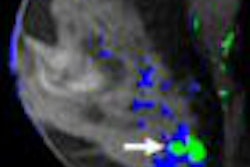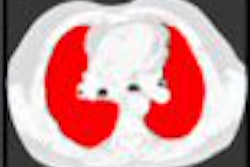Computer-aided detection (CAD) for breast imaging has generated controversy of late, with dueling studies producing different results regarding its accuracy.
Yet in more work that supports CAD, clinicians at the University of Michigan Medical School in Ann Arbor and the University of Chicago in Illinois have found that the technology can improve radiologists' accuracy in classifying clustered microcalcifications on serial mammograms, and reduce the biopsy rate when used as a second opinion in diagnostic breast ultrasound.
Managing microcalcifications
Lubomir Hadjiiski, Ph.D., and colleagues at the University of Michigan Medical School developed an automated CAD system to record and catalog microcalcification clusters as malignant or benign, based on interval change information on serial mammograms. They designed a neural network classifier for cluster analysis and used receiver operator characteristic (ROC) methodology to assess the effects of CAD on radiologists' estimates of the likelihood of malignancy and BI-RADS categories of the microcalcifications. The group presented the study at the 2007 RSNA meeting in Chicago.
Included in the work were 261 pairs of serial mammograms with clustered microcalcifications (94 malignant, 167 benign) from 94 patients. For each cluster on the current mammogram, the corresponding cluster on the prior exam was detected and matched. The CAD system extracted and analyzed the cluster features.
All the cases underwent biopsy, so the interval change was observed for most of the clusters, even if they were found to be benign. Eight radiologists read the temporal pairs, displayed side by side on a workstation, and provided estimates of the likelihood of malignancy and BI-RADS assessments both with and without the use of CAD.
For the radiologists, the average area under the curve in estimating likelihood of malignancy was 0.69 without CAD and 0.75 with CAD. Based on the BI-RADS assessments, the radiologists with CAD would perform 3.2% more biopsies for malignant masses on average, without increasing the number of biopsies for benign masses.
From these results, Hadjiiski's team concluded that CAD using interval change analysis can improve radiologists' accuracy in classifying clustered microcalcifications on serial mammograms.
Breast ultrasound benefits from CAD
Also at the RSNA meeting, researchers from the University of Chicago presented their work on the use of a prototype computer-aided diagnosis (CADx) workstation with diagnostic breast ultrasound and its potential impact on breast cancer detection. Karen Drukker, Ph.D., and colleagues conducted an observer study that imitated the potential clinical use of their facility's CADx workstation.
Six breast radiologists from multiple institutions were observers in this study. Three were breast imaging experts and three were general radiologists who perform breast ultrasound in their practices. The study included sonographic images, prior mammograms, and radiology/pathology reports.
Drukker's team asked the six observers to identify all abnormalities of interest in 143 patients and offer their appraisal of the likelihood of malignancy, BI-RADS, and lesion workup. They performed this interpretation before and after a presentation of real-time computer analysis results.
The six radiologists' performances were assessed in terms of area under the ROC curve (AUC), sensitivity, specificity, biopsy rate, and positive predictive value (PPV).
The researchers found a range in detection rates and interpretation between the expert and the general radiologists, with AUC values of 0.97 and 0.94, respectively. The observers also rated the CADx workstation for its clinical appeal and usefulness, for an average score of 3.2 out of 5.
Average improvement statistics included the following:
|
In light of the study findings, use of a CADx workstation could have a positive impact on patient care by decreasing the number of unnecessary biopsies, according to the researchers.
By Kate Madden Yee
AuntMinnie.com staff writer
February 29, 2008
Related Reading
Breast MRI CAD doesn't improve accuracy due to poor DCIS detection, February 18, 2008
Study finds that CAD improves mammography's sensitivity, February 13, 2008
Mammo CAD results show reproducibility in serial exams, January 10, 2008
UnitedHealthcare postpones CAD decision, November 27, 2007
CAD vs. radiologist second reads: What's better for screening mammograms? November 16, 2007
Copyright © 2008 AuntMinnie.com




















